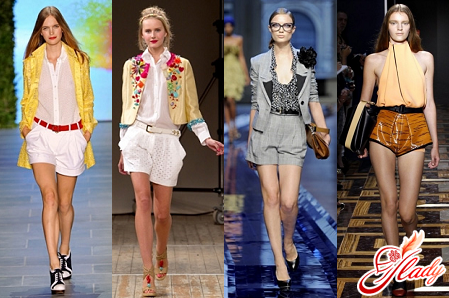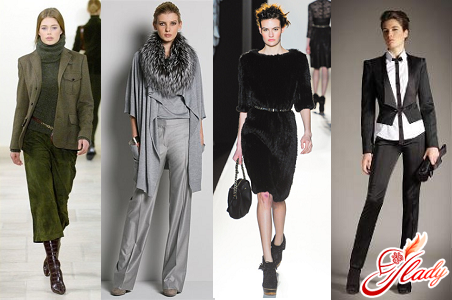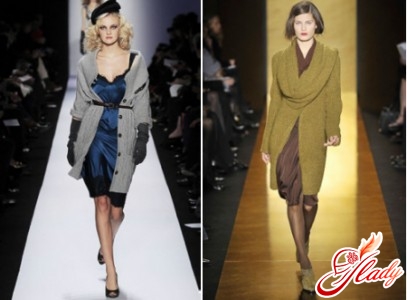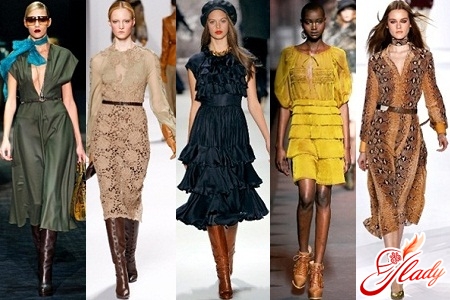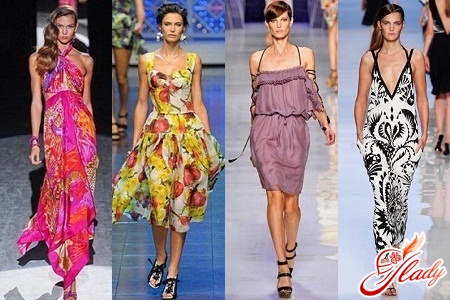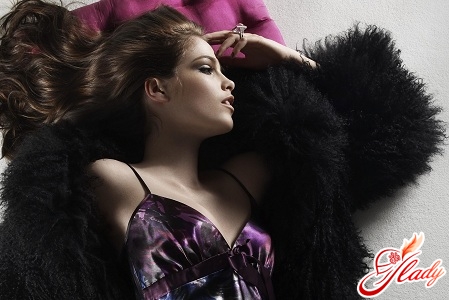 Winter is just around the corner, which means that manyof you are already thinking about buying a fur coat. This clothing made of natural fur should not only be beautiful and warm, but also of high quality. Therefore, we will tell you how to choose the right option that suits you.
Winter is just around the corner, which means that manyof you are already thinking about buying a fur coat. This clothing made of natural fur should not only be beautiful and warm, but also of high quality. Therefore, we will tell you how to choose the right option that suits you.
So what kind of fur coat should I choose?
When buying a fur coat, you should approach itseriously and responsibly, because it is quite an expensive pleasure that should serve you for many years. Therefore, if you are going to buy a product, then buy one that is made of high-quality material and sewn by skilled craftsmen. Not every woman knows how to choose the right fur coat, so in order not to make a mistake and not throw money down the drain, read our recommendations before going to the store. Everyone has their own priorities: some pay main attention to the style of the product, focusing on fashion trends, for others, the fur or the country of origin are important. Not everyone knows how to choose a quality fur coat, but you should understand that the main parameter of a good thing is its wear resistance. How long the product will serve you depends on the wear resistance of the fur from which it is sewn. Do you need a fur coat for several seasons? The longest, 20 winters, you wear an otter fur coat. It will perfectly retain its style for two decades. Fur coats made of sealskin and beaver are also "long-lasting" - they are designed for 15-18 seasons. Raccoon, sable and mink fur will serve you for 10 seasons, 6-8 will please coats made of arctic fox, karakul, muskrat, fox and sheepskin. The most fragile fur coats are made of chinchilla, rabbit and marmot - you can wear them for only 2-3 winters. The warmest fur coats are made of sable, mouton and fox, as well as options made of chinchilla, beaver, arctic fox, mink and nutria fur retain heat well. And the "coldest" are considered to be coats made of marmot and ermine. You will wear a good fur coat for more than one season, perhaps even your daughter will be able to wear it in a few years. High-quality fur does not wear out when walking, does not fade or go bald over the years, and is not afraid of rain, snow, or the crush of crowded transport. When assessing the quality of the pile, the following characteristics should be taken into account:
- thickness and height of fur;
- strength and shine of color;
- the presence of defects;
- softness, as well as the color of hairs;
how strong do the fibers behave whentension of the leather base. If you do not know how to choose a fur coat that will last a long time and at the same time retain its original appearance, study a special table that displays the indicators of fur wearability. However, keep in mind that all these terms are quite relative, since some ladies are very scrupulous about their clothes, so sometimes astrakhan fur coats are passed down in the family from one generation of women to another. Choose a product that will not only last a long time, but will also warm you even in the most severe frosts. So, according to the indicator of heat resistance of the pile, fur coats can be arranged in the following order: first place is occupied by arctic fox and deer, then comes raccoon, fox, wolf fur, hare, marten, sable, mink, kolinsky and astrakhan turned out to be less warming. In severe cold, the fur of a sheared rabbit, ermine, goat and marmot will not save you, and you should not rely on a hamster or gopher at all. Many sellers, when telling the buyer how to choose a fur coat, suggest choosing a warm and lightweight product. Do not fall for this! After all, in pursuit of reducing the weight of the coat and saving fur, furriers often stretch the skin very much. As a result, the thickness of the skin decreases, the distance between the hairs increases significantly and, as a result, you can wear such a fur coat only in a mild winter. The weight of the finished product depends on the length of the pile, the quality of the dressing, as well as the presence of additional insulation, which, by the way, has recently been practically not used by manufacturers. As an exception, they can only cover the back and chest area with it. The warmest fur coats are made from male fur, and females are too expensive and, moreover, cold. If you drive a car, then your option is a short fur coat or jacket made of otter or mink fur. But if you like walking, then buy a medium-length or full-length fur coat made of fox, raccoon, beaver, sheepskin, wolverine or wolf fur. If you need a fur coat not for every day, but for going out, then choose mink and those furs that undergo fashionable processing, such as engraving or laser cutting, dyeing, plucking for velvet, combining with leather, fabric, lace.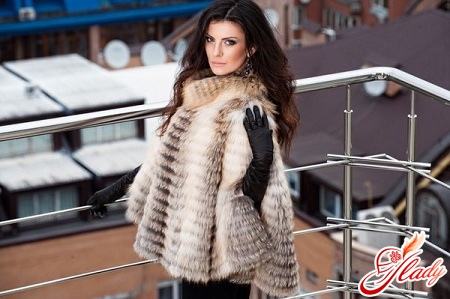
Fashion trends in the world of fur
How to choose the right fur coat - we have already told youtold, now we will tell you about the trends that reign today in the world of fur coats. So, the most popular material is still mink. The category of elite furs is headed by sable, many ladies prefer lynx, chinchilla and marten. Less expensive are fur coats made of beaver, mole, goat and rabbit - such outerwear is available to almost every person with an average income. As for the style, today "wild skins" are at the peak of popularity. Such products are distinguished by the fact that their sleeves, hem and sides are processed in such a way that a feeling of a torn edge is created. Another novelty from fur coat manufacturers is a mink coat without lining with careless cuts. To the delight of true lovers of shopping, stores are full of fur coats of the most unexpected colors. You can opt for bright blue or pink, light lilac or bright red. The main trend of the season is mink, which is collected from different shades, for example, beige-brown or green-gray. For the second season, the trend of combining fur products has not given up its positions. Walking along the podium, slender models demonstrate to the audience fur coats made of materials that differ in both color and texture - chipmunk, squirrel, hamster. Creatively thinking designers combine mink with African fox, and sable - with lynx. In addition, today fur is combined even with ordinary fabrics: lace, velour, suede. Knitted fur coats continue to be an object of female desire. This technology was developed and implemented by a Canadian designer named Paola Lishman, who proposed a special method of weaving on a special elastic base in the form of a mesh. Initially, only beaver skin was used for this, but today the most famous brands present mink and other fur products in their collections.
Shorn fur and its colors
When choosing a fur coat, pay attention to the finishingfur, because the overall appearance of the product, how good it will look and how it will behave in everyday life, that is, when worn, depends on it. Apart from dyeing, the skin is processed in several ways:
- Using a special device specialistpulls out of the fur long and too tight hairs, while the undercoat remains intact, which feels like velvet to the touch. As a result of such manipulations, the fur coat turns out to be "plush";
- Another type of treatment - cutting the fur. It is produced in different ways: under the fabric basis or under the mohair;
- Today, quite often manufacturers combine the above two technologies. So, after the haircut, "velvet" is cut to the desired height, or "velvet" is made of "plush";
- Recently, more and more popularityacquire "high" technology, such as laser haircut, as well as through perforation. The latter method is quite rare because of its high cost. In this case, a very fine pattern is applied to the mink or fashionable South African karakul with a laser, which gives the fur a look of elegant lace. However, the cost of such a product will be affordable.
Works for the benefit of its future clientsa thousand-strong army of designers, cutters, seamstresses and other specialists who come up with new methods of fur processing and dyeing every day. In addition to the usual tinting, there are a huge number of multi-layer options. One of the latest developments is the procedure of dyeing the material in combination with bleaching, the result of which is coloristic effects - the hairs along the entire length have a different color. For example, "Snow-top" is dark fur with light tips, and "Brisa" is when the pile at the base is dyed in a light tone, gradually turning into a darker shade. Furriers have many different solutions in their arsenal: for example, an ornament imitating the coloring of a leopard, tiger and others is applied to the surface of mink or rabbit fur using a stencil.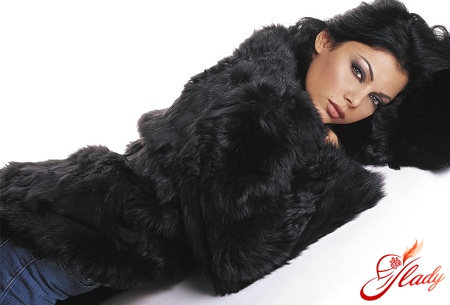
A few rules for a successful purchase
Now you know how to choose a fur coat correctly. However, in order to learn and consolidate the material covered, we will note several rules, the observance of which will help you buy a quality item:
- Wherever you buy a fur coat - in the market or in thestore - be sure to ask the seller to produce a certificate of conformity. This document confirms the quality of the product and indicates that it passed all relevant tests and is safe.
- On an expensive designer coat in several places there should be uniform labels (on the lining), as well as a branded tag containing information on how to care for the product.
- Pay attention to the condition of the fur. The cost and quality of the fur coat depends on the tailoring and the material. If the fur is healthy, it will always look beautiful. It differs in density, shine, elasticity, softness, silky, it should not be oily to the touch. Before buying, stroke the fur coat against the wool, twist the pile - the hairs should not fall out and break. Good fur does not have an unpleasant smell.
- If the reverse side of the skin is yellow, has cracks, creases, then it is better to refuse such a purchase. A good coat has a white reverse side.
- From the underside of a quality product lining neverwill not be stitched. Unscrew it and inspect the seams well - they should not be slovenly and crawling, they also simply have to be without sizing. Remember - the whole skin is the size of the material 15/15 centimeters. If the fur coat is made of pieces, then its price will be cheaper, but at the same time and warm such a coat will be less.
The fashion for fur coats is conservative, so it will beis relevant for more than one winter. The classic model is a straight or fitted fur coat of medium length, with a belt and a hood. Remember that the product should suit your body type. Tall and slender ladies can choose a fur coat of any style, there are no restrictions for them. If you have a curvy figure, then give preference to fur coats with short pile - long-haired fur will increase your figure by several sizes. If your figure type is "apple", then pay attention to wide A-line products of medium length. If you have a "pear" figure, then fur coats with a belt, where the emphasis is on the waist, will suit you. Fragile girls of short stature will suit a tight-fitting fur coat of length just below the knee. A lush fur coat in this case will be a bad choice - a petite girl will simply get lost in it. We advise you to read:




